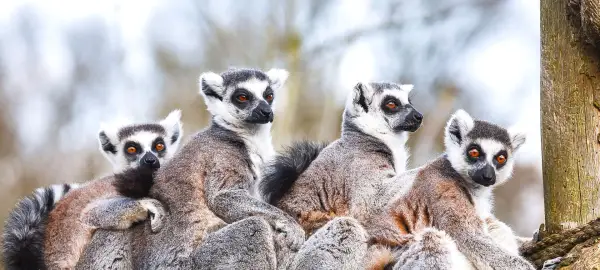Tourcode: MG1
- Overview
- Info & Inclusions
- Itinerary
- Map & Hotels
- Photos
- Dates & Prices
- Max Group Size 18
- Leapin lemurs!
- Guided forest walks
- Five different national parks and reserves
- Unique flora and fauna
- Meeting the friendly locals
- Fascinating pre- and post-colonial history
- Singles friendly (view options for single travellers)
Madagascar has all the right ingredients for an unforgettable tour destination; and this small piece of paradise does not fail to live up to its potential.
As we travel through scenery of mist-enshrouded virgin rainforest, rice paddies fringing low hills, deep canyons carved into peculiar shapes by erosion and Eden-like waterfall oases, we see Mother Nature at her best and come to appreciate the uniqueness of this special place.
We see ruined palaces, brightly coloured houses stacked on hillsides, bustling markets and innumerable intriguing sites that detail the area's pre- and post-colonial history - and of course, we'll be sure to see plenty of lemurs, which can be found naturally only in Madagascar and on one or two surrounding islands.
Truly a tour like no other!
- MealsSavour authentic flavours with included daily breakfasts and dinners at hotels or handpicked local restaurants—immersing you in local cuisine without worrying about reservations or budgets.
- Transport & Logistics
Private air-conditioned coaches and included internal ferries and flights—ensuring hassle-free travel so you can focus entirely on the discoveries ahead.
"Adventures Abroad tour leader's management and guest services managed the tour with great skill and dedication. The tour leader was on top of every move and transfer. We have not experienced any issues with logistics and had a great time."
~ JULIA O"The tour leader did an excellent job coordinating some difficult travel logistics, power outage issues and resolving problems and dealing with guests who had unrealistic expectations."
~ CYNTHIA COLLINS - Expert Guidance
Unlock insider secrets at every landmark with your full-time Tour Leader and expert local guides , all gratuities covered—no hidden tipping surprises—so you immerse fully in your destination's stories, worry-free. (Except for the tips to your tour leader at the end of your tour.)
"Amazing tour guide. Our tour guide was very well organized, Her passion, knowledge, and enthusiasm completely transformed the travel experience into something truly unforgettable..."
~ MELANIE LEMAIRE"Highly recommend every trip with Adventures Abroad. It's a well organized and well thought out adventure. The tour leaders are friendly, knowledgeable and experienced professionals. Highly recommend this company."
~ SUSAN WALL - Sightseeing & EntrancesAll entrance fees for sites visited as per the itinerary—no hidden costs—so you can explore ancient ruins and excursions with complete peace of mind.
- AccommodationsUnwind in clean, well-located 3 to 4-star hotels with private en suite facilities—handpicked for comfort and convenience after each day's discoveries—so you can rest easy knowing your stay supports the real adventure, not steals the spotlight.
- Small Group
Discover the world in small groups of up to 18 travellers plus your expert Tour Leader—unlocking spontaneity, off-the-beaten-path adventures, and genuine connections at a relaxed pace, free from crowds.
"Looking Forward to My Next Adventure The best feature of the Adventures tour was the small size that allowed the group to quickly load up, let everyone get acquainted within the first 24 hours, capitalize on unplanned surprises along..."
~ PHILIP BLENSKI"Good value for a great time I have traveled with Adventures Abroad for over 20 years now. Well thought out, interesting itineraries and the other travelers congenial and friendly. The price always seems fair and overall a..."
~ Trusted Customer - Airport Transfers For Land & Air CustomersWe handle hassle-free airport transfers for all our land and air tour customers—plus early arrivals or late departures when you book extra hotel nights directly with us for added peace of mind.
- International airfare to/from the tour. Tour Leader gratuities, lunches (box/picnic lunches from lodges available for purchase), drinks, personal items (phone, laundry, etc), international (if applicable) and domestic air taxes, visa fees, and any excursions referenced as 'optional'. Airport transfers for Land Only customers. Optional trip cancellation insurance. Our post-reservation trip notes offer further guidance on shopping, and visas.
- Seasonality and Weather:
While a Madagascar visit can be enjoyed year-round, the principal wet season is from late December through to the month of March; often involving cyclones, it is probably best avoided! The best time to go to Madagascar is therefore between the months of April through to mid-December. Being prepared for all weather conditions is always recommended as weather patterns do not necessarily stick to the traditional seasons. Madagascar is a huge country and therefore climate varies hugely subject to your geographic location.
July to September are often considered the prime months to visit with excellent weather. This is before the warmer season begins later in October.
October and November are excellent for baby lemurs, though lemurs in general can be seen year round.
September to December is a great time for combining lemur watching, chameleons and beach holidays with hot, relatively dry weather. - Transport and Travel Conditions:
24-30 seat bus, perhaps smaller if groups size warrants. Roads are generally not good, some are just plain bad. Though all efforts are made to ensure that vehicles are in excellent condition, punctures and weather may cause delays and require patience. Because our dates coincide with the drier time of year, dust can be an annoyance; some travellers have suggested bringing masks to enhance comfort.
The #3 difficulty rating on this tour: In order to fully enjoy and experience what Madagascar has to offer, one must be prepared to hike over uneven terrain, perhaps with mud and rocks and roots and heat. The lodge properties we use are also very spread out and the distance from main building to guest rooms may be considerable. There are also plenty of stairs throughout. Of course we do not "force" anyone to participate in activities listed in our itinerary; however, if one chooses to skip walks, one will miss most of what the country has to offer the visitor.
Am I suitable for this tour? Please refer to our self-assessment form - Activity Level: 3
These tours are considerably more strenuous than our Level 1 & 2 "cultural" tours and feature walks/hikes on undulating and uneven pathways for 3-7 hours at a leisurely pace. We don't hike every day, but participants should be fit and active and accustomed to trail walking, possibly in remote locations, and be prepared to engage in a conditioning regimen prior to the trip. Altitude may also be a factor on some tours, though none of our hiking tours currently occur above 3000m/10,000 ft. These are hotel-based tours with no camping, and you are required to only carry what you need for the day.
To learn more about the Activity levels, please visit our tour styles page. - Accommodation:
Hotels and lodges have hot water, electricity (maybe part-time), mosquito netting, dining areas, bar, sometimes swimming pools. Remote lodges are not air-conditioned though many are at higher elevations where heat is not a factor. Hotel porter service is available throughout (see 'Inclusions'). Single rooms are limited and likely smaller than twins. Many lodges are quite spread out and you will need to be able to walk up to 10 minutes from public areas to your room. - Staff and Support:
Tour Leader throughout, drivers, local guides at various locations.
Groups of 7 or less may be led/guided by one of our local Madagascar-based personnel. - Group Size:
Maximum 18 plus Tour Leader
- Day 1:Arrive in AntananarivoToday we arrive in Antananarivo, the capital of Madagascar.
Unlike most capital cities in southern Africa, Antananarivo was already a major city before the colonial era. The city was founded circa 1625 by King Andrianjaka and takes its name -- the 'City of the Thousand' -- supposedly because a thousand warriors protected it. Until the French conquest in 1895 Madagascar's history centred around the royal palace or rova, and the rock cliffs near the palace became known as Ampamarinana, ‘the place of the hurling', as Christian martyrs met their fate at the command of the Queen. There was no reason for the French to move the capital elsewhere: its pleasant climate made it an agreeable place to live, and plenty of French money and planning went into the city we see today.
Overnight in Antananarivo.
Included Meal(s): Dinner, if required - Day 2:Antananarivo - Fly to Taolagnaro - BerentyToday we fly to Fort Dauphin (Taolagnaro).* On arrival we drive (on a very poor road, approx 4 hours) to Berenty through beautiful landscape (mountains, endemic plants, baobab, cactus, sisal). The reserve lies some 80 km to the west of Tolagnaro, amid a vast sisal plantation, and the drive there is part of the experience. For the first half of the journey the skyline is composed of rugged green mountains, and "Travellers' trees" (ravenala) dot the landscape. Near Ranopiso is a grove of the very rare three-cornered palm, Neodypsis decary.
Before reaching the spiny forest we will stop at an Antanosy 'tomb' (actually the dead are buried elsewhere) known as the tomb of Ranonda. It was carved by the renowned sculptor Fiasia. The artistry of this unpainted wooden memorial is of a very high standard although the carvings are deteriorating in the frequently wet weather.
The following species of lemur are often seen: brown lemur, ring-tailed lemur and sifaka. The lemurs here are well-used to people. There are approximately 350 ring-tailed lemurs in Berenty, and the population has stayed remarkably stable considering that only about a quarter of the babies survive to adulthood. The young are born in September and at first cling to their mother's belly, later climbing on to her back and riding jockey-style.
* Due to frequent changes to air schedules, lodge availability, and seasonal variations, the final order of our overnight points often change from one departure to another. Overall content will remain the same, but there may be some adjustments prior to your chosen date.
Overnight at Berenty Private Reserve.
Included Meal(s): Breakfast and Dinner - Day 3:Berenty Private ReserveWe have a full day to experience Berenty.
Berenty is famous for its population of ring-tailed lemurs and sifakas. Henri de Heaulme, and now his son Jean, have made this one of the best-studied 260 hectares of forest in Madagascar. Although in the arid south, its location along the river Mandrare ensures a well-watered habitat for the large variety of animals that live there. In previous years the forest itself was threatened by the rampant spread of the cactus-like 'rubber vine', Cissus quadrangularis, but this is being vigorously tackled.
NOTE: There are some moderate to strenuous walks on this tour that, though optional, are an integral part of experiencing the highlights of the country. Reasonable level of physical fitness and steadiness on one's feet is important for the participant to fully and comfortably enjoy such tour activities.
Overnight at Berenty Private Reserve.
Included Meal(s): Breakfast and Dinner - Day 4:Berenty - Taolagnaro - Fly to AntananarivoToday we drive back to Taolagnaro (Fort Dauphin), on the same bad road, to connect with our flight back to Antananarivo where we spend the night prior to our onward road journey to Andasibe tomorrow.
Overnight in Antananarivo.
Included Meal(s): Breakfast and Dinner - Day 5:Antananarivo - Andasibe: Mantadia/AnalamzaotraToday we travel by road to Andasibe and the popular rainforest reserve of Andasibe-Mantadia. The drive over the highlands and escarpment is pleasant and the scenery is stunning. Since this is in the eastern escarpment, the climate is cooler and the rain falls mostly at night. Please note that this is a full day of travel.
This area is home to at least nine species of lemur (including the recent discovery of the Aye-aye). Our most likely encounter will be with a troop of grey bamboo lemurs, which are diurnal and sometimes feed on the bamboo near the warden's house. On a nocturnal lemur hunt one should also look for mouse lemurs and the greater dwarf lemur, which hibernates during the cold season. After dinner we'll have a night walk in order to experience the sights and sounds of the forest after dark.
Overnight in Andasibe.
Included Meal(s): Breakfast and Dinner - Day 6:Andasibe: Mantadia/AnalamzaotraToday we have a full-day visiting Analamazaotra Special Reserve (walks/hikes in the reserve).
This reserve protects the largest of the lemur family, the Indri. It stands about three feet high, with a barely visible tail, and black and white markings. Most visitors see Indris in Analamazaotra Special Reserve, and if they don't see them they definitely hear them. It is their voice that makes this lemur extra special: while other lemurs grunt, the indri "sings." It is an eerie, wailing sound somewhere between the song of a whale and a police-siren, and it carries for up to two miles as they call to each other across the forest. There are various legends connected with the Indri, which reveals the esteem in which the local people hold them. A popular tale tells of a man who climbed a forest tree to gather wild honey and was severely stung by the bees. Losing his hold, he fell but was caught by a huge indri which
carried him on its back to safety.
This is also a good place for bird watching. There are flowering trees of a species much favoured by the Madagascar green sunbird, which has an iridescent green head and throat. There are also plenty of the cuckoo-like blue couas, blue pigeons, paradise flycatchers, two species of falcon (Newton falcon and Madagascar falcon), two species of black vasa parrot, and many others.
This afternoon we have a leisurely nature walk in the area.
Overnight in Andasibe.
Included Meal(s): Breakfast and Dinner - Day 7:Andasibe - AntsirabeWe depart by road for Antsirabe, founded in 1872 by Norwegian missionaries attracted by the cool climate (1500m / 4,700 ft) and the healing properties of the thermal springs. Along the crest of the island lie the central highlands, a plateau region of red soil giving the country the nickname, "the Red Island."
Antsirabe means "place of much salt," and is the agricultural and industrial centre of Madagascar. This is the centre of a rich agricultural area lying on the slopes of the island's second highest peak. During our time in Antsirabe, we should be able to take a ponsee ponsee (rickshaw) ride.
Overnight in Antsirabe.
Included Meal(s): Breakfast and Dinner - Day 8:Antsirabe - RanomafanaThis morning we depart for Ranomafana.
The village of Ranomafana is situated by a river in the lush greenness of the eastern rainforest. The name Ranomafana means "hot water" and it was the waters, not the lemurs, which drew visitors in the colonial days to this place. Today the draw is the Ranomafana National Park, a fragment of high altitude rainforest that first came to world attention with the discovery of the golden bamboo lemur in 1986.
Overnight in Ranomafana.
Included Meal(s): Breakfast and Dinner - Day 9:Ranomafana National ParkToday we enjoy morning and evening walks/hikes.
Hidden in these trees are at least 12 species of lemur: diademed (Milne-Edwards) sifaka, red-bellied lemur, red-fronted lemur, ruffed lemur and three species of bamboo lemur. At night you can add mouse lemur, avahi, lepilemur, fat-tailed dwarf lemur, and even aye-aye. Then there are more than 110 species of birds with 36 endemic; reptiles, butterflies and other insects. There is also much variety in the vegetation and scenery, all of which can be observed from well-constructed trails.
During our walks we are most likely to see red-fronted brown lemurs and perhaps the rarer red-bellied lemur. The golden bamboo lemur is less easily seen. The most memorable of the easily found lemurs is a subspecies of the diademed sifaka, Milne-Edward's sifaka. Unlike the more familiar Verreaux's sifaka which is largely white, this is dark brown with cream-coloured sides.
This evening we experience the park after dark with a night walk.
Overnight in Ranomafana.
Included Meal(s): Breakfast and Dinner - Day 10:Ranomafana - FianarantsoaThis morning we journey by road onward to Fianarantsoa. On our way we pass forest, open country, rice paddies modest country homes.
Fianarantsoa means 'Place of good learning'. It was founded in 1830 as the administrative capital of Betsileo and is one of the more attractive Malagasy towns. The Upper Town, with its narrow winding streets and plethora of churches, is one of our stops today. Fianarantsoa also has a wonderful market, which features a great variety of herbal medicines and dried fish brought up by train from Manakara.
On arrival we'll have an informal panoramic tour of the town including a walk up to a viewpoint overlooking the city. We'll have a walk though the old town and hope that the colourful market is on.
Overniht in Fianarantsoa.
Included Meal(s): Breakfast and Dinner - Day 11:Fianarantsoa - Ranohira & Isalo National ParkToday we travel by road to the vicinity of Isalo National Park. En route we stop at Ambalavao to visit the traditional weaving atelier, Antemoro. We also visit Anjaha Park hoping to spot the ring-tailed lemur.
In Isalo, we encounter the the warm weather of the south amidst a different kind of scenery -- the savanna of the vast plateau of Ihorombe, near the Massif of Isalo. The Isalo National Park was created in 1962 to preserve the ancestral beauty of the site. Archaeological relics and funeral sanctuaries create a magical atmosphere made of strong contrasts. Lemur calls and bird chirps are heard in this green oasis along rivers filled with lush plants. While the sandy cliffs with rare riparian vegetation complete the picture.
Overnight Ranohira.
Included Meal(s): Breakfast and Dinner - Day 12:Isalo National ParkToday we spend exploring the Isalo National Park on foot.*
Established in 1962, the Isalo National Park protects 815 sq km of sandstone massif wildly eroded by wind and rain into bizarre ridge featuring wild forms, impressive gorges and canyons, and tiny stalagmite pinnacles. The climate is dry tropical with warm temperatures all year around. One of our options today is a walk to the Piscine Naturelle where a natural stone cave overlooks a crystal-clear waterfall flowing into a deep green pool surrounded by leafy pandanus trees. This tranquil pool is a virtual oasis in the heat, and offers a welcome relief after the long hike to get there.
* NOTE: Due to the nature of the terrain and the heat in this area, the walks here are more difficult on average than others on our program. By now your Tour Leader will have a good sense of overall group abilities and individual limitations and can provide advice on your suitability for today's excursions.
Overnight in Ranohira.
Included Meal(s): Breakfast and Dinner - Day 13:Ranohira - TulearToday we travel by road to Tulear (Toliara) to better place us for tomorrow's flight back to 'Tana.
Overnight in Tulear.
Included Meal(s): Breakfast and Dinner - Day 14:Tulear - Fly to AntananarivoToday we fly back to the capital. Ever-changing flight times-permitting, we may be able to accomplish some sightseeing upon arrival.
Tana will surprise you with its rice paddies, pollution, Asian influences, lots of stairs up steep hills, palaces, cobbled streets, and churches. This is not Africa or Asia, Madagascar is totally unique. This is a bustling place with lots of churches, a mosque, a zoo and plenty of markets. The capital is basically built on 12 hills and steep steps lead to the main Independence Square in the town center. The architecture is a mixture of old wooden houses, modern offices and French colonial style buildings.
Tana does not have much in the way of "tourist attractions" per se, but we hope to take in the highlights, including the Rova, the shell of the Royal Palace built in 1864 for Queen Ranavalona II by the Scotsman, James Cameron. Everything that was wooden burned in 1996, but the imposing stone fortress of a shell still stands.
Overnight in Antananarivo.
Included Meal(s): Breakfast and Dinner - Day 15:DepartureDeparture from Antananarivo.
BON VOYAGE!
Included Meal(s): Breakfast
Countries Visited: Madagascar
*The red tour trail on the map does not represent the actual travel path.
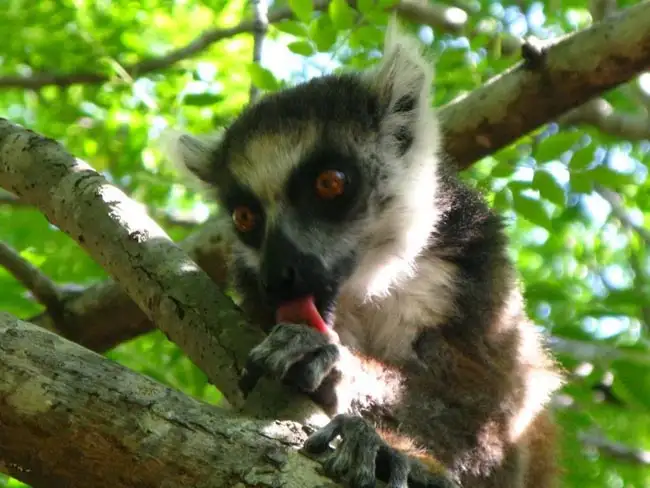
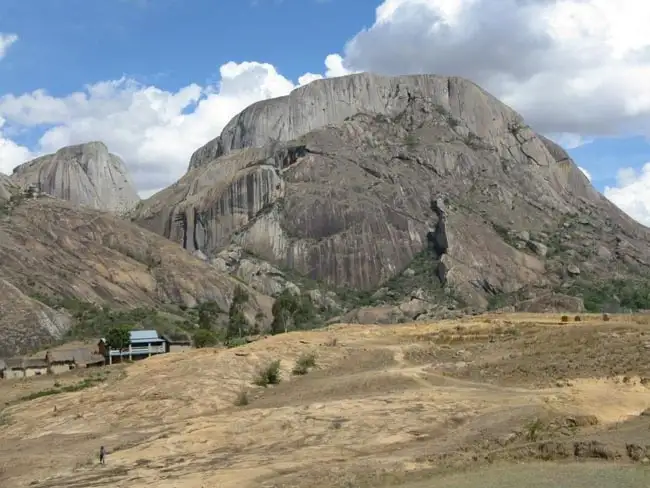
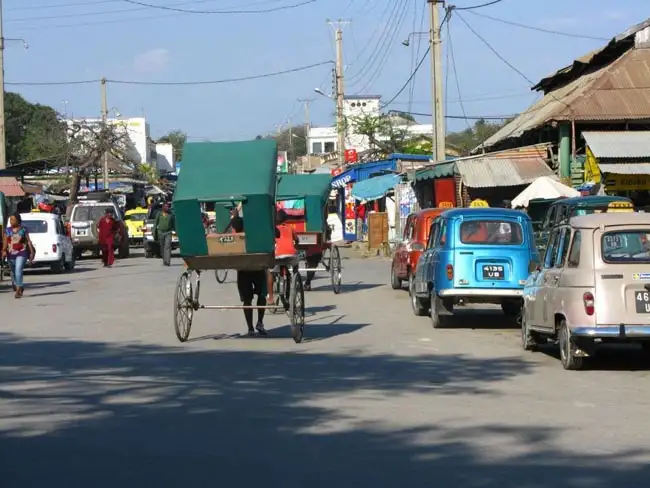
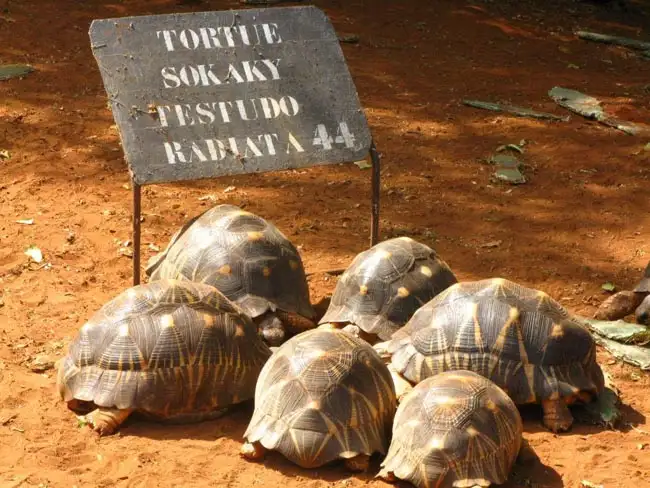
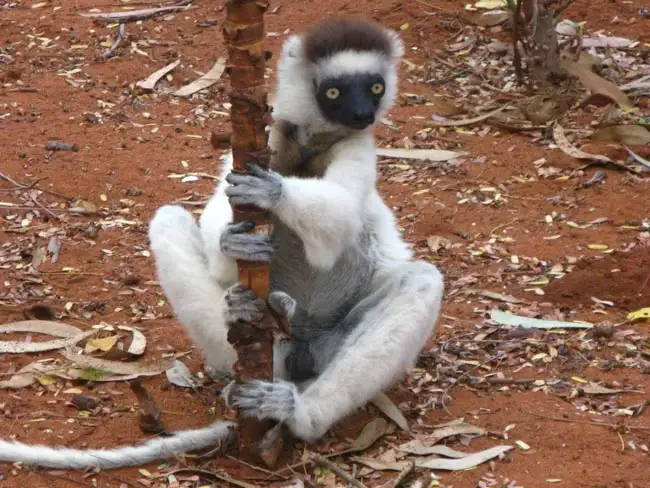
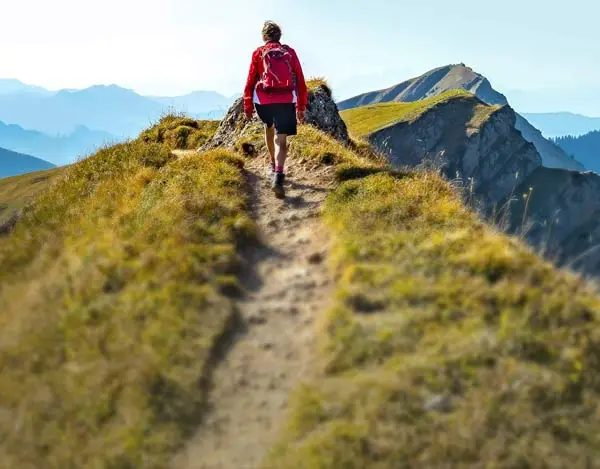
Book This Tour
- Final payment: Due 90 days prior to departure.
- Deposit: A non-refundable $1000 USD Deposit is required at booking.
- Internal Flight Taxes: An extra $116 USD applies for taxes and fees on tour flights. The internal airfares are included, but taxes are listed separately as they may change. Exceptions are noted in Red.
- Optional Single Supplement: $1140 USD (number of singles limited).
(View options forsingle travellers) - Transfering Tour or Date: Transferring to another tour or tour date is only permissible outside of 120 days prior to departure and is subject to a $100 USD change fee.
(Read our cancellation policy)
Prices below are per person, twin-sharing costs in US Dollars (USD). Pricing does not include airfare to/from the tour and any applicable taxes.
Tourcode: MG1
Frequently Asked Questions
- What is the maximum number of participants on a trip?Most of our tours carry a maximum of 18 participants; some tours (ie hiking tours) top out at 16. In the event that we do not achieve our minimum complement by our 90-day deadline, we may offer group members the option of paying a "small-group surcharge" as an alternative to cancellation. If all group members agree, we will confirm the trip at existing numbers; this surcharge is refundable in the event that we ultimately achieve our regular minimum. If the small group surcharge is not accepted, we will offer a refund of your deposit or a different trip of your choice.
- Can I extend my tour either at the beginning or end? What about stopovers?Yes, you can extend your tour either at the beginning or the end and we can book accommodation in our tour hotel. Stopovers are often permitted, depending on air routing. Stopovers usually carry a "stopover" fee levied by the airline.
- How do I make a reservation? How and when do I pay?The easiest way to make a reservation is via our website; during office hours, you are also more than welcome to contact us by telephone.
A non-refundable deposit is payable at the time of booking; if a reservation is made within 90 days, full payment is required. Some trips require a larger deposit. If international airline bookings require a non-refundable payment in order to secure space or the lowest available fare, we will require an increase in deposit equal to the cost of the ticket(s).
Early enrolment is always encouraged as group size is limited and some trips require greater preparation time.
Once we have received your deposit, we will confirm your space and send you a confirmation package containing your trip itinerary, any visa/travel permit related documents, invoice, clothing and equipment recommendations, general information on your destination(s), and forms for you to complete, sign and return to us. Your air e-tickets (if applicable), final hotel list, final trip itinerary, and instructions on how to join your tour, will be sent approximately 2-3 weeks prior to departure. - What about cancellations, refunds, and transfers?Please review our cancellation policy page for details.
- I am a single who prefers my own room. What is a single supplement?All of our tours have a single supplement for those who want to be guaranteed their own room at each location.
This supplement is a reflection of the fact that most hotels around the world do not discount the regular twin-share rate for a room by 50% for only one person occupying a room. Most hotels will give a break on the price, but usually in the range of 25-30% of the twin-share rate. This difference, multiplied by each night, amounts to the single supplement.
The conventional amount can also vary from country to country and some destinations are more expensive than others for single occupancy. In order to be "single friendly," the supplements we apply are not a profit centre for us and we do our best to keep them as reasonable as possible.
On most tours we limit the number of singles available, not to be punitive, but rather because many hotels allow for only a limited number of singles; some smaller hotels at remote locations also have a limited number of single rooms available.
Please note that most single rooms around the world are smaller than twin-share rooms and will likely have only one bed. - Do you have a shared accommodation program?Yes! If you are single traveller and are willing to share, we will do our best to pair you with a same-gender roommate. Please note that should we fail to pair you, we will absorb the single supplement fee and you will default to a single room at no extra charge.
